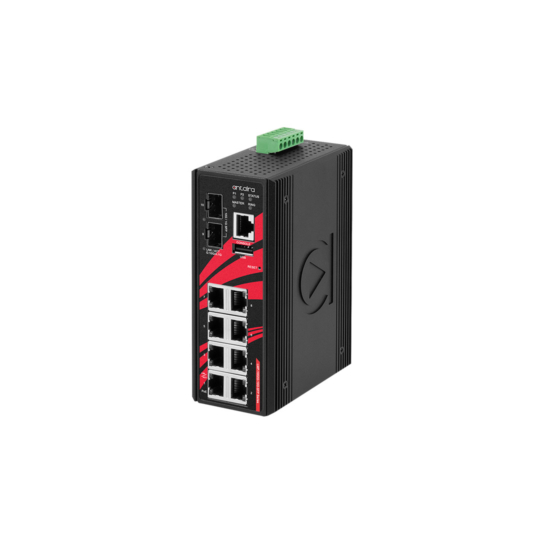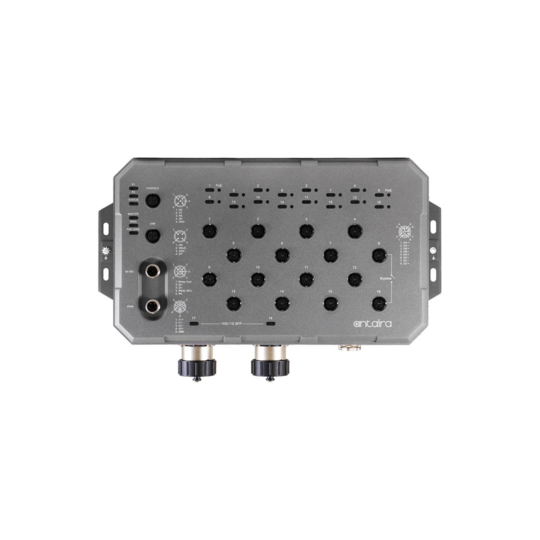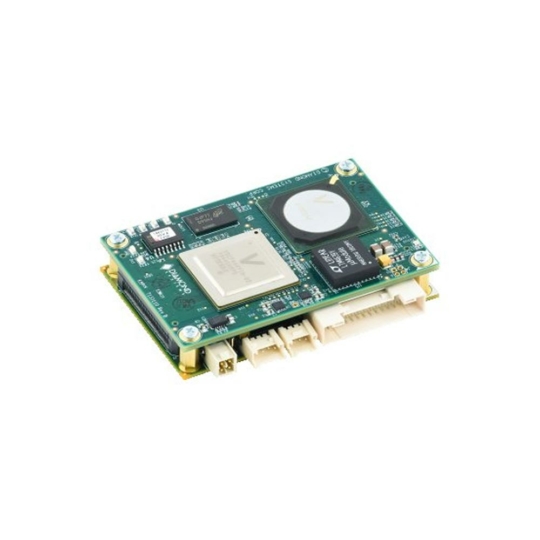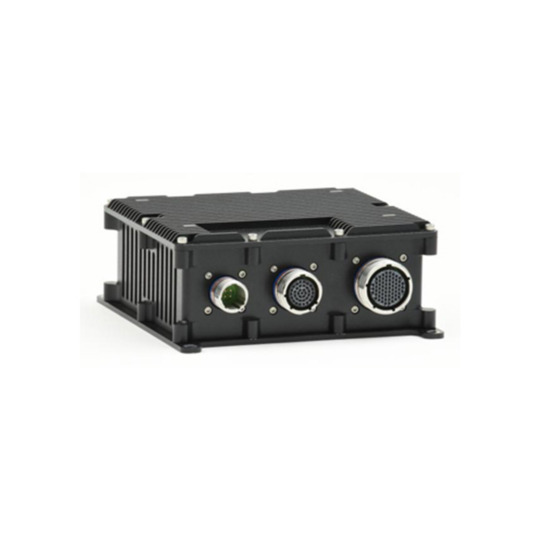Types of Rugged Ethernet Switches for Industrial Applications
Rugged Ethernet Switches are optimized for use industrial and edge-based applications where they are required to operate in the harshest environments in the presence of dust, water, extreme temperatures and vibration. Our range of rugged switches deliver the security, reliability, and scalability you need to unleash the possibilities of Industrial IoT at the edge. Ruggedized ethernet switches are deployed across a wide range of applications and industries such as on the factory floor for control and automation, outdoors for enabling smart cities, on-board rolling stock for intelligent transportation, or for military use for mission critical cases where extreme rugged specifications must be met.
What is a Rugged Ethernet Switch?
Aside from design and technical specification to withstand harsh environments, a rugged ethernet switch operates in the same manner as a standard commercial switch. They are installed as an intermediary between connected devices to allow communication across multiple ports. An ethernet switch receives units of data or “frames” at one of its ports, reads the frame’s MAC address, determines the destination, and forwards the data to a targeted port in a process measured in nanoseconds. Industrial Ethernet Switches can receive and send data packets in both directions to connect devices simultaneously at different bit rates. 100 Mbps ‘Fast Ethernet’ is the most popular speed used in industrial Ethernet applications, however, the emergence of high-resolution cameras and sensors require greater bandwidth with the need for ‘Gigabit Ethernet’ and ’10 Gigabit Ethernet’ bandwidths, especially when up-linking multiple downlinks.
Industrial Fast Ethernet Switches: 100 Mbit/s
Industrial Gigabit Ethernet Switches: 1 Gbit/s
Industrial 10 Gigabit Ethernet Switches: 10 Gbit/s
Rugged Ethernet Switch Form Factors

Rugged DIN-Mount Ethernet Switches

Waterproof M12 Ethernet Switches

Rugged Board Level Ethernet Switches

Rugged Military Ethernet Switches
Rugged Ethernet Connectors
An industry standard across our range of rugged ethernet switches is the use of RJ45 connectors. RJ45 connectors are suitable for most use cases in environments where shock and vibration or exposure to water isn’t present. Some manufacturers increase the rugged connectivity of an RJ45 connector by including a locking screw but there are better alternatives in the market.
Locking M12 connectors not only provide greater resistance to shock and vibration but also create an IP67 or IP69K seal to create a waterproof solution. This allows the Waterproof M12 Ethernet Switches to be mounted outdoors or next to machinery on a factory floor without the requirement for a protective cabinet, reducing overheads and simplifying cabling for installation.
Where space is at a premium for rugged ethernet connectivity, latching JST connectors are used on Rugged Board Level Ethernet Switches. This allows for breakout communication with multiple ports being assigned to one connector.
For extreme rugged applications such as Military and Aerospace use cases, MIL-DTL-38999 connectors are utilised on our MIL-STD Rugged Military Ethernet Switches. These miniature, high-density circular connectors made for some of the most demanding conditions and harshest environments imaginable. This is a very strict Mil-STD set forth by the U.S. department of Défense to establish an industry standard for performance and reliability.
Managed vs Unmanaged Rugged Ethernet Switches
Ethernet switches are available as either simple unmanaged switches or more complex and secure managed switches. The choice of installing an unmanaged switch or managed switch largely depends on the industrial applications performance requirements.
Rugged Unmanaged Ethernet Switches
Rugged unmanaged ethernet switches will typically be used for basic line topology networks. This allows permission for connected devices to communicate with each other, but little else. An unmanaged rugged switch will be neither visible nor addressable in the IP network. Known as plug-and-play devices, the main advantage to selecting an unmanaged ethernet switch is providing a quick and inexpensive installation requiring no configuration and trouble-free device replacement. Unmanaged switches are useful in smaller networks for adding additional ports where data control, diagnostics and other intelligent management functions are performed by another device.
Rugged Managed Ethernet Switches
A rugged managed switch allows for greater intelligence as an administrative device. Using managed switches permits remote management, configuration, monitoring, and the troubleshooting of network problems via a web browser GUI or SSH/Telnet/serial CLI. Each managed rugged switch has its own IP address, so it is visible as a member of the network. Shared networks in a plant are also made possible by managed switches.
Complex and redundant ring topology networks will require features found only in a managed switch. Managed switches allow for redundant topologies in ring structures to protect against the loss of connections without a communication breakdown. In other words, a managed switch must be installed to build a network with genuinely uninterrupted data communication. A managed switch provides route changing when a failure occurs in the regular route. The time required to find and use new routes in the network, sometimes referred to as switchover or recovery time, is a key parameter of switch performance.
Industry Example Managed vs Unmanaged
The food & beverage industry would utilise an unmanaged switch to handle a subsystem for measuring a specific ingredient on the process line, where as a managed switch would be utilised for complex management of an IP video surveillance system transmitting high-definition images in real-time of the plant floor.
Want to Discuss Ruggedized Ethernet Switches?
Tell us about your application and a member of our team will get right back to you.
